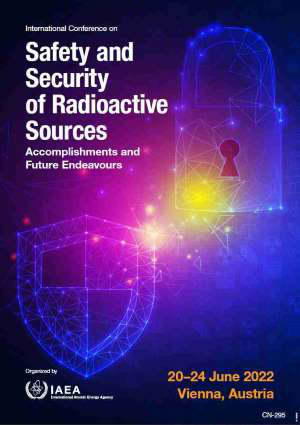Speaker
Description
1 Introduction
The Ghana Revenue Authority, Customs division is recognized as one of the key Front Line Officers who play a significant role in detecting radioactive materials at border entry points. These officers use handheld nuclear security detection equipment as a secondary detection strategy, though X-ray scanners are the primary equipment used to inspect cargo shipments at the country's borders and ports of entry and exit. However, due to the extensive work shift conditions, some officers have found it quite challenging to maintain these equipment effectively. These handheld equipment help tremendously with detection; nevertheless, if they have functionality defects, they can lead to inadequate detection of radioactive sources. In response to an ongoing IAEA Coordinated Research Project on Advancing Maintenance, Repair, and Calibration of Radiation Detection Equipment, Ghana's Nuclear Regulatory Authority (NRA) believes it is critical to properly implement technical measures to enhance nuclear security practices pertaining to equipment maintenance optimization among the country's FLOs.
2 Objective of Work
This research is intended to devise optimal technical measures to provide relevant information for developing a Standard Maintenance Procedure (SMP) for optimizing the maintenance procedures of nuclear security handheld detection equipment.
3 Systems Engineering Approach
As part of the CRP's positive impacts to member states, the NRA's nuclear security staff, proposed using a systems engineering approach to guide the optimization process of maintaining these handheld security detection equipment used by FLOs at the country’s borders. A systems engineering (V-Model) approach is adopted towards the implementation of the project goal. This method includes a detailed project definition, the project development process, and project testing and integration. Figure 1 depicts the approach's development process.
Figure 1 SMP Development Process (V-Model)
4 Detection Equipment assessment findings based on field experience
As part of the project activities, a visit was made to two ports in the country; a sea and land ports. Elubo, Takoradi in the Western Region and Aflao in the Volta Region where the custom officers facilities were visited. The status of equipment functionality and performance was assessed, and the data collected is currently being analyzed; however, a significant amount of data remains to be collected; thus, more technical visits will be made to other stakeholder sites in the country where nuclear security detection equipment is used, as well as other border crossings.
5 Conclusion
It is critical that FLOs in Ghana recognize the functional purpose of these handheld detection equipment in the field, as well as how to properly maintain them. Prior to enhancing Ghana’s nuclear security practices pertaining to equipment maintenance optimization among the country's Front Line Officers, a standard maintenance procedure is necessary to be developed using systems engineering approach. In addition, Ghana seeks to improve its nuclear security regime by considering effective monitoring of nuclear security detection systems used for detecting nuclear and other radioactive material, as well as sustaining coordination among its stakeholders to address all its national and international nuclear safeguards, safety, and security obligations.
| Country OR Intl. Organization | Ghana |
|---|

